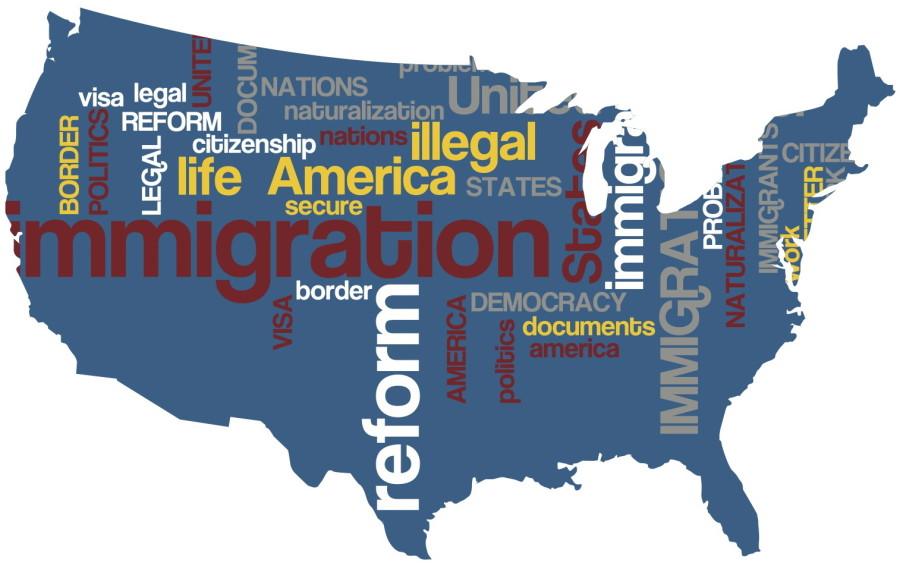Immigration: A Changing Face of the Nation
November 18, 2015
Donald Trump has no time to read statistics. The real estate mogul and current Republican presidential favorite (this will not last) has boasted this to crowds of voters, who love him all the more for it. It’s a shame, however, because Mr. Trump would be intrigued by the findings of a new immigration report from the Pew Research Center.
Pew has made findings against the nativist dogma spewed by Mr. Trump at his well-attended rallies, reporting a decline in illegal immigration from Mexico from 300,000 to 150,000 each year since 2007. Mexico still provides the most legal immigrants to the U.S. each year, whose incarceration rate is lower than that of the general population.
Meanwhile, net immigration by Hispanics, who compose around 47% of the foreign-born population today, is projected to slow in the coming years. By 2065, Hispanics will be just 31% of the immigrant populace. These numbers are not likely to drive The Donald off message. But, they will give firepower to embattled immigration reform advocates who embrace more humane solutions over mass deportation.
The latter half of the Pew report is more bad news for Trump’s school. Fifty years ago, Congress passed the Immigration and Nationality Act of 1965, which dismantled an existing immigration system preferential to white European nations. The new system opened up channels of migrants from other parts of the world, primarily Asian countries like China and India. Pew’s new immigration numbers show the vast demographic changes spurred on by the 1965 law.
By 2055, Asian migrants will rise to almost 40% of the immigrant population, and the U.S. will have no single ethnic majority. Though whites comprise 62% of the total population today, soon America will no longer be dominated by its traditional ethnic group. Perhaps this is one reason why Mr. Trump has “captured the attention” of the nation.
Recall that immigration has never been a welcomed force to any established majority in the United States. History buffs will remember the intense fear of an Irish takeover in the 19th century, the “Know Nothing Party,” and the Chinese Exclusion Act of 1882.
Yet this demographic reordering is arguably of a greater magnitude than any previous one in the nation’s history. Groups like NumbersUSA, a well funded group lobbying for stricter controls on who can enter the country, embody the fear among traditionalists that they are losing ground. The reform act of 1965 was never meant to be used as it is today, they argue, and regular citizens are picking up the public tab for a reckless immigration policy.
Americans as a whole are somewhat of a mixed bag when surveyed about immigration, often acknowledging that they rely on migrant labor, but still harboring prejudices towards foreigners. The most common split occurs along party lines, too. About 55% of Democrats believe immigration is positive for the country, while 53% of Republicans say it will make it worse.
Regardless of how people feel, one thing is certain: the period between 1965 and 2055 will mark a wholescale demographic reordering of the United States. The country will be more multicultural and diverse than it has ever been in history, and for the first time the majority “face of the nation” will not be white. That kind of transition should initiate a real dialogue about how the national identity should change and adapt.
Donald Trump’s campaign is one form of this dialogue, just of the hawkish and ignorant variety. His wide support, though, testifies to a spirit that is very real among some Americans. The country is changing rapidly, and they are not on board.


